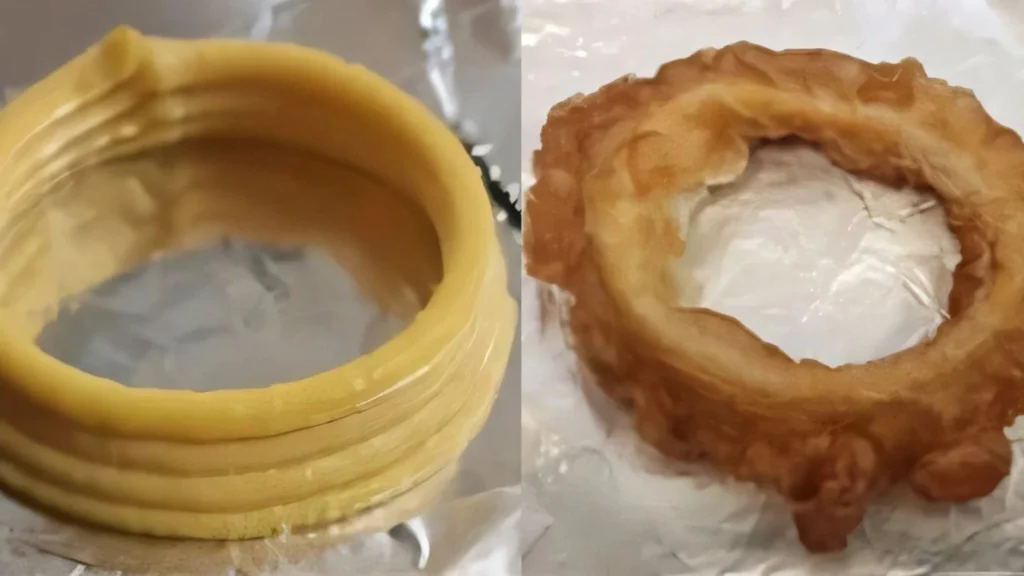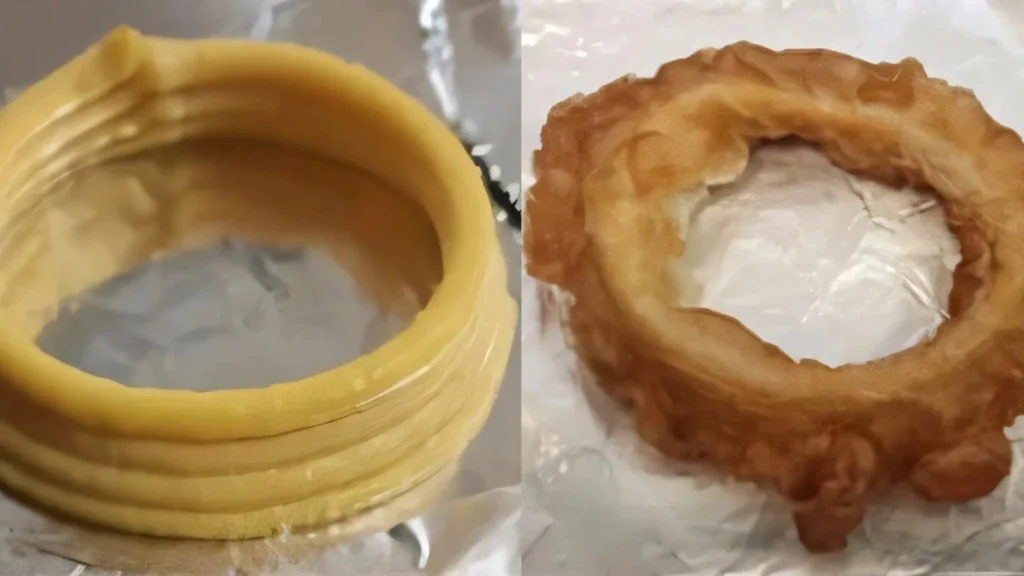Researchers create plant-based calamari using 3D printing technology that matches real seafood’s texture when battered and deep-fried.
Researchers have successfully 3D printed plant-based calamari rings that closely mimic the texture and protein content of real squid, according to a new study published in ACS Food Science & Technology.
The team, led by Poornima Vijayan and Dejian Huang, improved upon their previous vegan calamari prototype by optimizing the recipe and printing parameters to better match real calamari’s characteristic softness and elasticity when deep-fried.

“This research showcases the potential of 3D printing to transform sustainable plant proteins like mung bean and microalgae into seafood analogs with comparable texture,” said Vijayan, the study’s lead author.
The scientists tested multiple versions of their printable paste recipe, varying the amounts of mung bean protein isolate, powdered light-yellow microalgae, gellan gum, and canola oil. Using a food-grade 3D printer, they deposited the mixtures into layered rings approximately 1.8 inches wide.
Unlike their original research presented at ACS Fall 2023, the team froze the rings overnight before battering and deep-frying them – the way most calamari is traditionally prepared.
Through laboratory tests analyzing properties related to chewiness, including hardness, springiness, and cohesiveness, the researchers determined that the optimal recipe contained 1.5% gellan gum, 2% canola oil, and 10% powdered microalgae.
Microscope images revealed that small voids in the structure of these plant-based samples modified their softness, making them resemble real seafood. Additionally, analysis showed the plant-based version could contain more protein (19%) than the reported protein composition of squid (14%).
Read more : Stanford Unveils Ultra-Fast Microscale 3D-Printing Method
The research team is currently working on consumer acceptance and scaling up the formulation for more applications, with the aim of providing an environmentally friendly alternative to traditional seafood products.
































